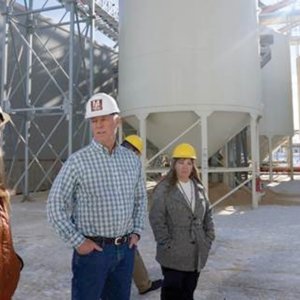Yellowstone County and Billings’ tax abatement programs encouraged $410.8 million of investment in the community in 2020, involving eleven different businesses, supporting $126.7 million in payrolls and granting $3.3 million in tax savings, reports Steve Simonson, Senior Project Manager for Big Sky Economic Development.
Those totals include abatements granted to Phillips 66 and CHS. Simonson pointed out that the refineries account for two-thirds of all manufacturing that happens in Yellowstone County. Deducting refinery abatements, the total capital invested by other businesses came to $34.3 million who have total payrolls of $26.6 million. Their total tax savings was $154,679.
Simonson highlighted one company’s abatement program that concluded in 2019. Motor Power Equipment invested $2,530,000 in their business increasing its market value from $1,900,000 to $5,400,400, creating an increase of $3,500,400 of new wealth in Yellowstone County. The company’s beginning general tax bill was $42,555 and ended $75,319, an increase in taxes for the county of $32,764.
Other companies with on-going tax abatement programs in the county, extending as far back as 2011, also include Aspen Air, Billings Flying Service, Home 2 Suites by Hilton, Subaru of Billings, Montana Peterbilt, Northwest Scientific and Summit Resource International. In total the companies made capital investments totaling $445 million from 2011 through 2018 and generated 95 jobs from 2019-20.
There are two versions of the abatement program which the Montana Legislature has allowed to cities and counties, both of which strongly focus on job creation.
A five year program reduces tax on remodeling, reconstruction, and/ or expansion of existing real property when the cost of improvements exceeds $500,000.Tax relief comes with only an incremental increase in taxable value on the new value generated by the improvements or additions. The Remodeling, Reconstruction or Expansion Tax Incentive Program allows a reduction of taxes by 100 percent for the first five years after completion of the project. After the fifth year, the property is returned to its full taxable value.
The ten year program, called the New & Expanding Industry Tax Incentive Program, allows tax reductions on the taxable value of the real property up to 50 percent in the first five years, but only for businesses that generate at least 50 percent of their revenues from out of state. The abatement decreases ten percent a year from year six to ten, to the full 100 percent of tax liability in year ten.
In 2017 the state legislature allowed governing bodies the discretion to choose an abatement of either 50 percent or 75 percent in years one to five, and then decrease it 15 percent a year in years six to ten.




